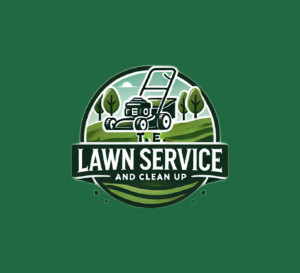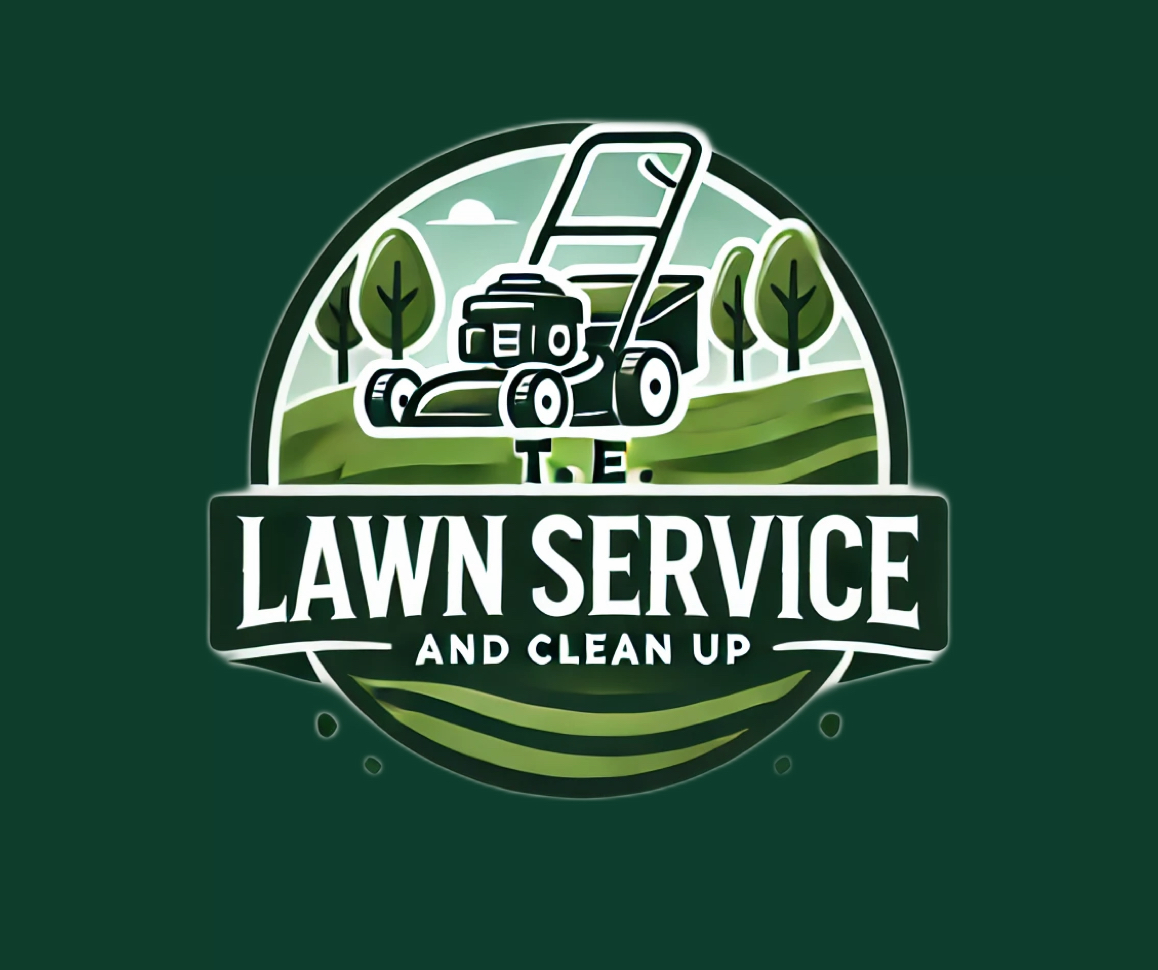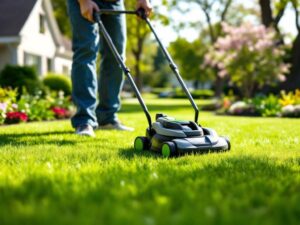A healthy green lawn is one of the most inviting parts of any home, but keeping grass in top condition can be challenging in Atlanta. The combination of clay-heavy soil, hot summers, periods of drought, and sudden heavy rain often leaves homeowners struggling with thinning or dying lawns. If your yard is turning brown, patchy, or overrun with weeds, it may feel like starting over is the only option. The good news is that with the right approach you can bring your lawn back to life.
At TE Lawn Service and Clean Up, we specialize in restoring struggling lawns across Atlanta. We understand the challenges local homeowners face and the specific steps needed for success. This guide walks you through a step by step process to revive a dying lawn and explains when professional help can make the process faster and easier.
Step 1: Assess the Condition of Your Lawn
The first step in reviving a lawn is understanding why it is struggling. Not all brown or thinning grass is the same. Common causes in Atlanta include:
- Drought stress: Grass turns brown and brittle after prolonged heat with little rainfall.
- Overwatering: Clay soil holds water, leading to soggy grass and root rot.
- Poor soil: Nutrient deficiencies prevent healthy growth.
- Weeds and pests: Crabgrass, clover, grubs, and chinch bugs compete with or destroy turf.
- Improper mowing: Cutting grass too short weakens it.
Walk your lawn and look closely at the symptoms. Thin patches may indicate pests or poor soil, while brown patches could point to watering issues. A clear diagnosis helps you choose the right treatments.
Step 2: Test Your Soil
Healthy grass starts with healthy soil. Atlanta’s red clay soil is naturally dense and can be low in nutrients. A soil test shows you exactly what your lawn needs.
The University of Georgia Cooperative Extension offers soil testing for homeowners. Test results provide pH levels and nutrient recommendations. Most lawns thrive with a pH between 6.0 and 7.0. If soil is too acidic, adding lime helps balance it. If it is too alkaline, sulfur may be needed.
Correcting soil issues early gives your grass the foundation to recover. TE Lawn Service can assist with soil testing and apply the right amendments based on professional analysis.
Step 3: Remove Debris and Thatch
Dead grass, leaves, and thatch buildup suffocate lawns and block nutrients. Before reseeding or fertilizing, clear away debris.
- Rake up leaves and sticks left behind from storms.
- Remove thatch layers thicker than half an inch using a dethatching rake or machine.
- Bag the waste or add it to compost.
This step clears the way for air, water, and fertilizer to reach the soil.
Step 4: Aerate the Lawn
Compacted soil is a major problem in Atlanta. Heavy clay soils compress easily, limiting root growth and trapping water on the surface. Aeration loosens the soil and creates small holes that allow oxygen, water, and nutrients to penetrate deeply.
Core aeration, which removes plugs of soil, is the most effective method. Fall and spring are the best seasons for aeration, but lawns in severe distress may benefit at any time of year.
If you do not own an aerator, TE Lawn Service provides professional aeration services with commercial-grade equipment.
Step 5: Overseed Thin and Bare Patches
Once soil is prepared, overseeding fills in bare or thinning areas. Thick grass naturally crowds out weeds and looks healthier.
- For Tall Fescue lawns, overseed in fall or early spring.
- For Bermuda or Zoysia lawns, overseed in late spring or early summer when temperatures are warm.
- Spread seed evenly with a broadcast spreader.
- Lightly rake or roll the area to ensure seed-to-soil contact.
- Keep soil moist until new grass germinates.
Overseeding combined with aeration gives your lawn the best chance to recover quickly.
Step 6: Fertilize Correctly
Fertilizer replenishes the nutrients your lawn needs to grow strong and green. The type and timing of fertilizer depend on the grass species and soil test results.
- Warm-season grasses like Bermuda and Zoysia benefit from nitrogen-rich fertilizer in late spring and summer.
- Cool-season grasses like Fescue need fertilizer in early and late fall, with light feeding in spring.
- Always follow the label instructions to avoid burning grass with too much fertilizer.
Slow-release fertilizers are ideal because they provide steady nutrients without overwhelming the lawn. TE Lawn Service offers customized fertilization programs tailored to Atlanta’s soil and grass types.
Step 7: Water Deeply and Wisely
Watering is often where homeowners go wrong. Brown grass may mean it is too dry, but overwatering is just as harmful.
- Most lawns in Atlanta need about 1 to 1.5 inches of water per week.
- Water early in the morning to reduce evaporation and disease.
- Apply water deeply once or twice a week instead of daily shallow watering.
- Use a rain gauge or empty containers on your lawn to measure how much water you apply.
Proper watering encourages deeper root systems that withstand drought better.
Step 8: Control Weeds and Pests
Weeds thrive in weak lawns, and pests often attack stressed grass. To revive your lawn, you need to eliminate these problems.
- Apply pre-emergent herbicides in spring and fall to stop weeds before they grow.
- Spot-treat existing weeds with selective herbicides that do not harm grass.
- Watch for signs of grubs, chinch bugs, or fungal diseases.
- Maintain healthy grass because thick turf naturally resists weeds and pests.
TE Lawn Service offers integrated weed and pest control programs to keep your lawn protected year-round.
Step 9: Mow Properly
Improper mowing is one of the most common causes of lawn decline. Cutting grass too short weakens roots, while dull blades tear grass instead of cutting it cleanly.
- Bermuda should be kept at 1 to 2 inches.
- Zoysia should be kept at 1.5 to 2.5 inches.
- Tall Fescue should be kept at 3 to 4 inches.
- Never remove more than one third of the grass blade at a time.
- Sharpen mower blades regularly for a clean cut.
Consistent mowing at the correct height encourages thicker, healthier grass.
Step 10: Be Patient and Consistent
Reviving a dying lawn takes time. You may not see immediate results after reseeding or fertilizing, but consistent care pays off. Continue to mow properly, water deeply, and address weeds as they appear. Within a season or two, your lawn should look noticeably healthier.
Patience combined with consistent effort is the key to long-term success.
When to Call TE Lawn Service
While homeowners can follow many of these steps on their own, reviving a severely damaged lawn can feel overwhelming. TE Lawn Service and Clean Up provides expert lawn restoration services in Atlanta that save time and deliver professional results.
Our team offers:
- Soil testing and amendments
- Core aeration and overseeding
- Fertilization and weed control
- Pest management
- Professional mowing and maintenance
With our help, even the most damaged lawns can be transformed into healthy, vibrant landscapes.
Conclusion
A dying lawn does not mean you have to start over. By following a step by step approach that includes soil testing, aeration, overseeding, fertilization, proper watering, weed control, and correct mowing, you can revive your lawn and enjoy a green, healthy yard again.
For Atlanta homeowners who want guaranteed results without the hard work, TE Lawn Service and Clean Up is the trusted local choice. Our customized lawn care programs are designed to overcome the challenges of Atlanta’s climate and soil, helping you achieve the lawn you have always wanted.
Contact TE Lawn Service today to schedule lawn restoration services in Atlanta and bring your yard back to life.




